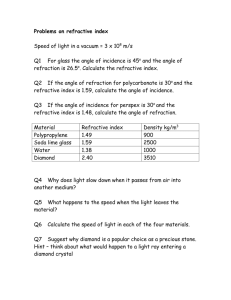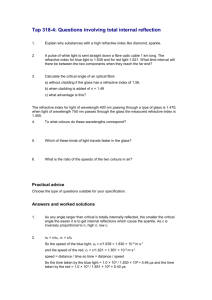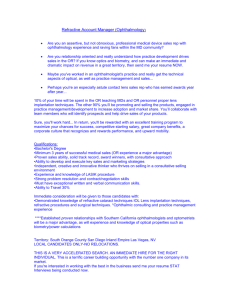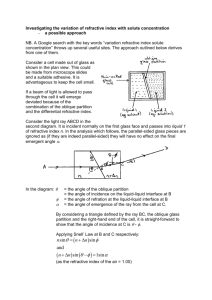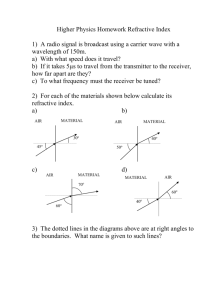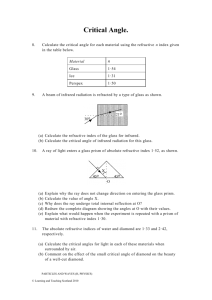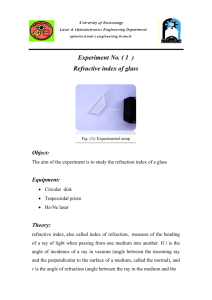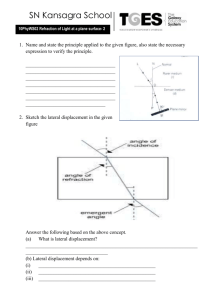Geometrical optics refraction
advertisement
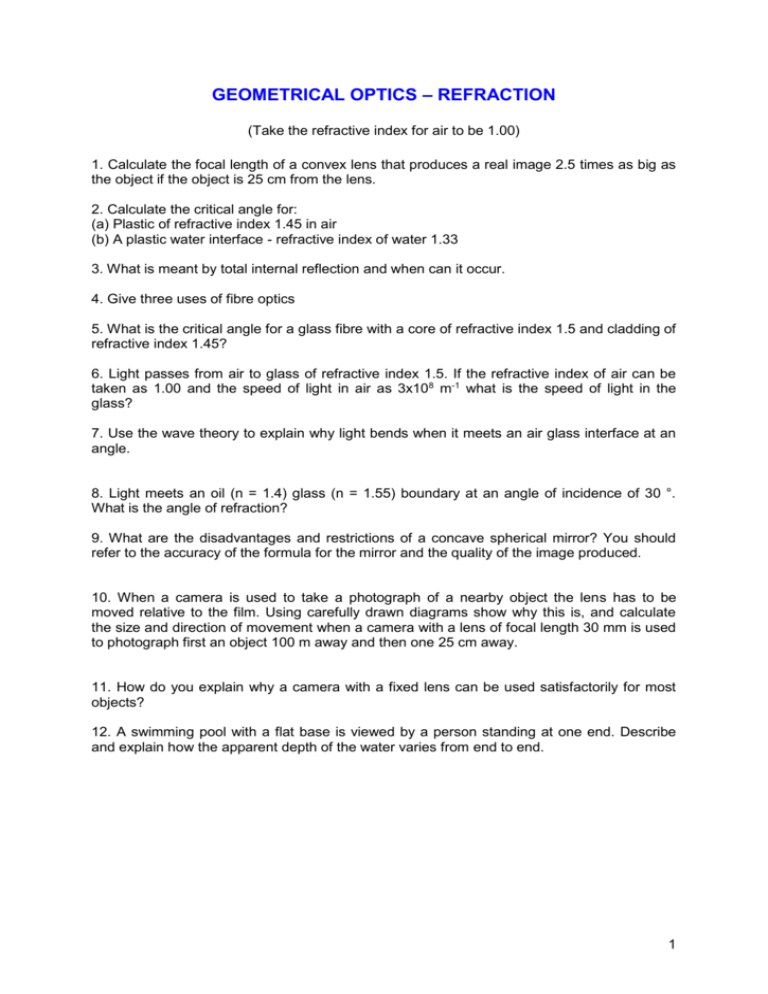
GEOMETRICAL OPTICS – REFRACTION (Take the refractive index for air to be 1.00) 1. Calculate the focal length of a convex lens that produces a real image 2.5 times as big as the object if the object is 25 cm from the lens. 2. Calculate the critical angle for: (a) Plastic of refractive index 1.45 in air (b) A plastic water interface - refractive index of water 1.33 3. What is meant by total internal reflection and when can it occur. 4. Give three uses of fibre optics 5. What is the critical angle for a glass fibre with a core of refractive index 1.5 and cladding of refractive index 1.45? 6. Light passes from air to glass of refractive index 1.5. If the refractive index of air can be taken as 1.00 and the speed of light in air as 3x108 m-1 what is the speed of light in the glass? 7. Use the wave theory to explain why light bends when it meets an air glass interface at an angle. 8. Light meets an oil (n = 1.4) glass (n = 1.55) boundary at an angle of incidence of 30 °. What is the angle of refraction? 9. What are the disadvantages and restrictions of a concave spherical mirror? You should refer to the accuracy of the formula for the mirror and the quality of the image produced. 10. When a camera is used to take a photograph of a nearby object the lens has to be moved relative to the film. Using carefully drawn diagrams show why this is, and calculate the size and direction of movement when a camera with a lens of focal length 30 mm is used to photograph first an object 100 m away and then one 25 cm away. 11. How do you explain why a camera with a fixed lens can be used satisfactorily for most objects? 12. A swimming pool with a flat base is viewed by a person standing at one end. Describe and explain how the apparent depth of the water varies from end to end. 1

